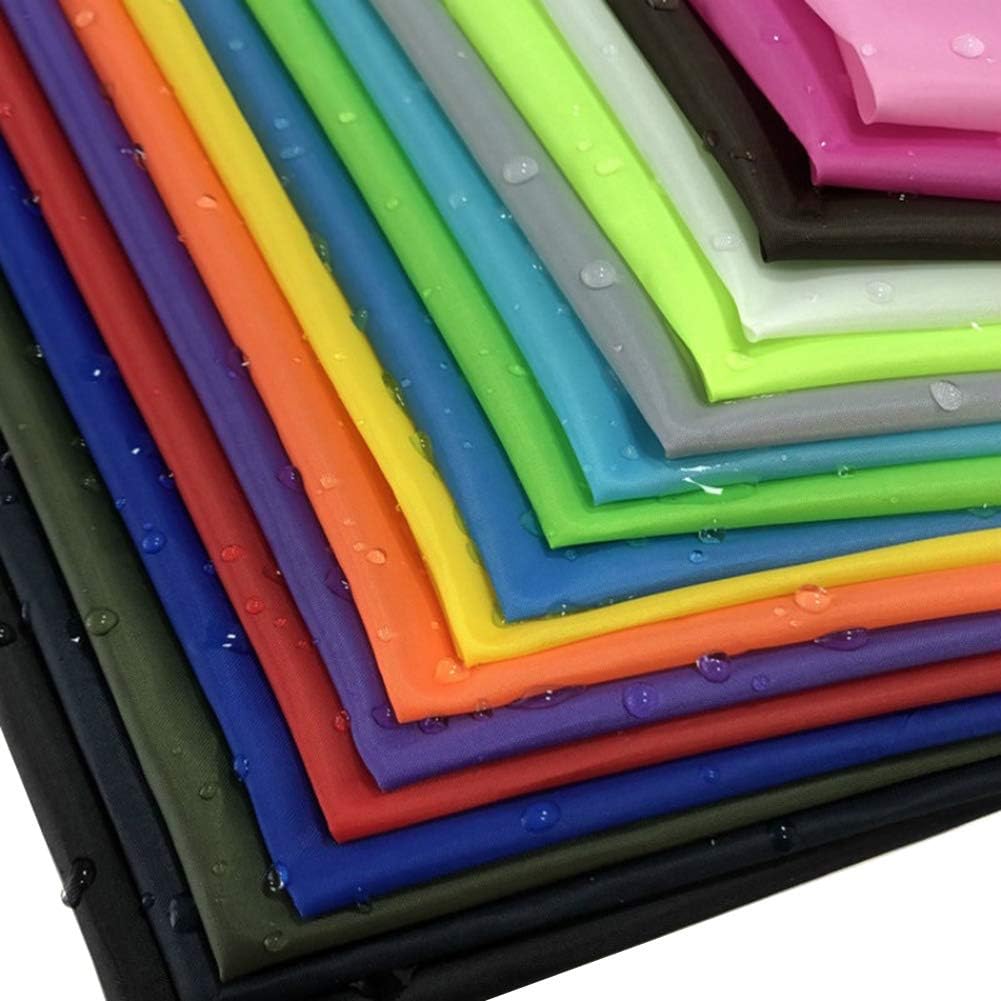Ever wondered if you can print cool designs on nylon fabric? Good news: Yes, You can! Nylon is strong and stretchy, making it a great material for creative printing. In this process, special ink changes from solid to gas and mixes directly with the nylon, making your design part of the fabric. This article will guide you through how to do this step by step. We’ll talk about what ink to use, how hot the press should be, and more. So, if you’re excited to turn nylon into your own art piece, keep reading! We’ll show you how to make your nylon items unique and full of color.
Understanding Nylon Fabric
Nylon, a synthetic polymer known for its exceptional strength and elasticity, stands out as a preferred material in a myriad of applications, from clothing to industrial products. But when it comes to the art of sublimation, where designs are transferred onto materials using heat and pressure, nylon presents a unique set of challenges and opportunities.
Exploring Nylon’s Unique Properties for Sublimation
Nylon’s resilience and durability make it an intriguing substrate for sublimation. Unlike more common materials like polyester, nylon’s synthetic fibers possess a different molecular structure, affecting how they interact with sublimation dyes. This distinct composition means that when heat and pressure are applied, nylon can bond with sublimation inks in a way that produces vibrant and long-lasting colors. However, this process requires precise conditions to ensure the ink transfers correctly without damaging the nylon fabric.
Challenges and Benefits of Sublimating on Nylon
Sublimating on nylon isn’t without its hurdles. The material’s heat sensitivity is a double-edged sword; it allows for effective dye transfer at lower temperatures but also makes it susceptible to melting or warping if exposed to excessive heat. Furthermore, not all nylon is created equal. Some blends may not take to sublimation as well as others, leading to faded or patchy designs.
On the flip side, successfully sublimated nylon items boast impressive color depth and durability, resistant to fading even after multiple washes. This makes nylon an excellent choice for creating high-quality, customized items that stand the test of time, from athletic wear to banners and flags.
Identifying High-Quality Nylon for Sublimation
To maximize the success of nylon sublimation, it’s crucial to select the right kind of nylon. Look for high-quality nylon fabrics that are specifically labeled as ‘sublimation ready’ or have a high synthetic content, as these are more likely to produce vibrant, consistent results.
The Sublimation Process on Nylon
Delving into the sublimation process on nylon unveils a world of creativity and precision. Transforming a blank piece of nylon into a vibrant, custom-designed item involves careful consideration of temperature, pressure, and the right sublimation inks. Let’s walk through this process step by step to ensure your nylon sublimation projects turn out flawlessly.
Step-by-Step Guide to Nylon Sublimation
- Preparation: Begin by selecting a high-quality, sublimation-ready nylon fabric. Pre-treat the fabric if necessary to enhance ink absorption and color vibrancy.
- Design: Create or choose your design, keeping in mind that sublimation works best with high-contrast, colorful images. Use graphic design software to tailor your design to the specific dimensions of your nylon item.
- Printing: Print your design onto a special sublimation paper using sublimation inks. These inks are key to achieving bright, durable colors that bond well with nylon fibers.
- Transferring: Place the printed design face-down on the nylon fabric and use a heat press to apply controlled heat and pressure. The heat transforms the ink into a gas, allowing it to penetrate the nylon fibers.
- Cooling: After pressing, allow the fabric to cool. The ink reverts to a solid state, permanently embedded in the fabric, resulting in a vibrant, high-resolution image.
Temperature and Pressure Requirements
Achieving the perfect balance of temperature and pressure is crucial in nylon sublimation. Typically, a lower temperature range than that used for polyester is recommended to prevent damage to the nylon fabric. A heat press setting between 375°F to 400°F (190°C to 204°C) for about 30 to 50 seconds is often ideal, but it’s important to conduct tests to find the optimal conditions for your specific nylon material.
Read: Can You Sublimate on Acrylic Beanies?
Specialized Sublimation Inks for Nylon
Not all sublimation inks are created equal, especially when it comes to sublimating on nylon. Inks formulated specifically for nylon sublimation can make a significant difference in the quality and durability of the final product. These inks are designed to adhere better to nylon’s unique molecular structure, ensuring that designs are not only vibrant but also resistant to fading and wear.
Common Mistakes to Avoid in Nylon Sublimation
Venturing into the world of nylon sublimation can be rewarding, yet certain pitfalls await the unwary. Awareness and precaution can turn these challenges into mere stepping stones towards mastering the craft. In this segment, we highlight some common mistakes to sidestep, ensuring your nylon sublimation projects are nothing short of spectacular.
Preventing Color Bleeding and Image Distortion
One of the most frequent issues in nylon sublimation is color bleeding, where colors seep outside their intended boundaries, leading to blurry designs. This often occurs due to excessive heat or prolonged pressing time. To prevent this, it’s crucial to adhere to the recommended temperature and time settings, which typically range from 375°F to 400°F (190°C to 204°C) for 30 to 50 seconds. Additionally, using a tack spray to lightly adhere the sublimation paper to the nylon can minimize movement and reduce the risk of image distortion.
Addressing the Impact of Excessive Heat
Nylon’s sensitivity to heat means that excessive temperatures can not only cause color bleeding but also damage the fabric itself, leading to melting or warping. This not only ruins the aesthetic appeal of the item but can also compromise its structural integrity. To avoid this, always start with lower heat settings and gradually increase if necessary, based on the specific type of nylon fabric you’re working with. Conducting test presses on scrap pieces of nylon can help determine the optimal heat settings without risking damage to your main project.
Ensuring Even Pressure and Heat Distribution
Uneven pressure or heat during the sublimation process can lead to inconsistent coloration and image clarity. It’s essential to use a high-quality heat press that provides uniform heat across the entire platen and allows for adjustable pressure settings. This ensures that every part of the nylon fabric receives the same amount of heat and pressure, resulting in a uniformly transferred design.
Advantages of Sublimating on Nylon

Sublimation printing on nylon isn’t just about overcoming challenges; it’s also about harnessing the unique advantages that this material offers. From the longevity of the prints to the environmental perks, sublimating on nylon brings a host of benefits that make it a compelling choice for a wide range of applications.
Durability and Vibrancy of Sublimated Nylon Products
One of the standout advantages of sublimating on nylon is the exceptional durability and vibrancy of the end products. Nylon fibers, when combined with high-quality sublimation inks, result in prints that are not only striking in color but also resistant to fading, even with regular use and washing. This makes nylon an excellent choice for items that demand longevity and color retention, such as outdoor flags, sportswear, and backpacks.
Versatility in Design Achievable on Nylon
Nylon’s adaptability to sublimation printing opens up a world of creative possibilities. The process allows for intricate, high-resolution designs that can cover entire pieces of fabric without affecting the material’s texture or flexibility. This versatility in design is perfect for custom apparel, promotional items, and unique home decor, offering endless opportunities for personalization and branding.
Environmental Benefits of Sublimation on Nylon
Sublimation printing is known for its eco-friendly attributes, and when applied to nylon, these benefits are further accentuated. The process involves turning ink directly from a solid to a gas, which bonds with the fabric without creating wastewater or using harmful solvents. This clean and efficient method reduces the environmental footprint of textile printing, aligning with the growing demand for sustainable manufacturing practices.
Read: why is my black sublimation turning green?
Conclusion:
In wrapping up our exploration of nylon sublimation, we’ve journeyed through the essential steps, tips, and creative possibilities this process offers. Nylon, with its resilience and adaptability, proves to be an excellent canvas for vibrant and lasting designs. By carefully navigating the heat and pressure requirements and choosing the right inks, you can transform ordinary nylon items into personalized works of art. Whether for fashion, home decor, or promotional materials, the potential of sublimating on nylon is vast and exciting. Armed with these insights, you’re now equipped to embark on your own sublimation projects, turning your creative visions into tangible, colorful realities on nylon.

